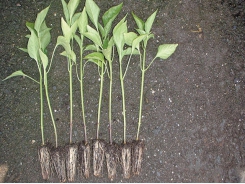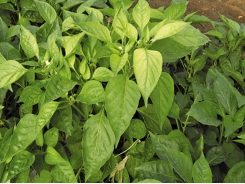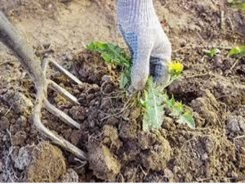Growing Strawberry Plant – How to Grow Strawberry Plants

Growing Strawberry Plants
A hundred years or so ago, strawberries were much more diversified than they are today. Over the years the species have lost their identity and become merged with the modern hybrids. This is sad in some ways because of the loss of taste and flavour. Our native wild strawberry Fragaria vesca and F. chiloensis, and its variety F .c. grandiflora, the pine strawberry, have all played their part in the building up of the modern strawberry. These were grown on special walls known as a strawberry wall, and mounds to get the best flavour.
Amongst them could be found white, cream, mottled and red berries and some with greenish-pink fruits. The disadvantage of these old varieties was that the fruit was coarse, large and very irregular in shape; a good many pounds had to be gathered to get one good bowlful for exhibition. Another failing was the large calyx and the fact that, in some varieties the plug was not easily detached and the fruit had to be nibbled off. All this was fine for discriminating individuals but when produced commercially and distributed by the ton, or used for freezing and canning, a greater uniformity in size and shape of berry was essential.
The variety Royal Sovereign, more nearly contains all the ideals than any other variety. However, it has certain disadvantages being more a variety for the southern half of the country than for northern districts because of its liability to disease where rainfall and humidity are high.
On the whole, however, the strawberry is a very adaptable plant and I have grown it at an elevation of 1,300 ft in a peat bog with excellent results. A deep root run is essential for strawberries and some of the older growers claim that the roots will penetrate to a depth of 2 ft. At the same time it does make surface roots which can be damaged by too deep cultivation.
Where strawberries are grown for exhibition, or to produce extra fine berries for the table, there is nothing to beat the mound or ridged system where the soil is kept up by stones, bricks or thick wooden planks. The object is to produce a deep well-drained soil with a free circulation of air around the clusters of fruit, which should be held clear of contact with gritty soil. To this end, such methods as growing strawberry plants in barrels are used. Incidentally I believe this was first used aboard sailing ships, and illustrations in old books appear where lettuces, endive, and other plants are shown growing in the same way to produce fruit and salads to combat scurvy.
How to Grow Strawberry Plant
In general, strawberries object to artificial fertilisers and prefer large quantities of manure, compost, leaf-mould, fish and bonemeal instead. On heavy soils, basic slag is ideal for digging into the soil when preparing a bed, and I would never dream of preparing the soil for planting strawberries without putting in a good double handful to the square metre. On thin heavy soils, I find that it pays to plant on ridges made up in the same way as for any other crop with the difference that the ridges are not subsequently knocked down. The method is to dig one spit forward and one on each side on top of this, adding manure to the middle and central trench.
On dry soils and in situations where it is not possible to have a strawberry bed as such, I like to use the raised bed method in the same way as alpines can be grown in chalky soils in a border of heaths and azaleas. An enclosure is made with three or five large stones about 18 in in height. The bottom is broken up and a good forkful of manure added. Then the space within the stones is filled with a good compost equivalent to John Innes No. 2 and three or five plants accommodated. The flowers look attractive and the berries hang down and colour on the warm stones to produce immaculate fruit. This is a technique which can be used in small gardens and as a variation an, alpine strawberry or perpetual strawberry may be planted in the middle of this group, for there is no real reason why strawberries must be grown in rows.
Lifting them up in this way in a flower border provides interest and variation as the next enclosure may be of something entirely different. Under ideal conditions, strawberry plants will continue to bear from three to six years but after the third year the berries, although more prolific, become smaller. On one commercial planting I know of, they used to allow them to go to six years and the fruits were almost entirely used for jam making. Today, three, or at the most four years, is considered the profitable limit.
When you want to know how to grow strawberry plants and you want to be sure of good quality strawberries, it is a good proposition to have three beds or three rows which will be made up of maidens, two-year-old and three-year-old plants. And, where space allows, as the three-year-olds are dug up, they are replaced by a new batch, not on the same bit of land, but on the other side of the three rows or beds.
Strawberry Runners
Strawberry runners may either be taken from the two or three-year-old plants, it makes no difference, but I stress again that they must be taken from healthy plants.
Strawberry Pests and Diseases
Good cultivation will go a long way to keeping down disease, but there should be no sentiment about keeping a plant which begins to look sick and smaller than the others. I find there is no point in trying to treat individual plants for any sort of disease or stunting which may take place. The best thing is to fork them up, burn the plants and soak their stations with a good disinfectant.
The list of pests and diseases which attack the strawberry is a long one, but in my opinion one of the worst is the aphid. This not only debilitates the plant but, in the case of the shallot aphid, causes severe damage by dwarfing the plants, curling the leaves and distorting the blossoms. Perhaps most serious is the fact that aphids are vectors of virus diseases. In the ordinary garden, not one person in a hundred thinks of regularly spraying strawberry plants, but in my opinion that is most important and would more than halve subsequent troubles. It is also important when selecting runners to dip these in a good insecticide.
Leatherjackets and cutworms (surface caterpillars) can also play havoc with young and established strawberry plants alike, attacking them both above and below ground. If this is a problem HCH dust should be used.
Amongst the diseases botrytis or grey mould is possibly the most serious but this can be controlled by using captan or thiram. But it is essential to spray early and certainly not later than petal fall. Where special rings are pushed into the ground to support the trusses (these consist of a wire circle supported by a short cane) no strawing or matting is required. A free circulation of air round the fruit is provided and is, I think, preferable to strawing.
Strawberry Favourite Fruits
You may have guessed from my enthusiasm, that I find growing strawberry plants very enjoyable and that strawberries are my favourite fruit, but it is also a fruit that can be grown practically anywhere under almost any conditions in town or country.
If so desired, they can be grown in pots, boxes, window boxes and even in hanging baskets. Furthermore they can be had over a longer period than perhaps any other fresh fruit. Advantage can be taken of a long fruiting season by planting early, mid-season and late varieties plus perpetuals and alpine strawberries.
Varieties
The variety I choose for pot culture is Cambridge Favourite, an early to mid-season variety when grown out of doors. The best flavoured strawberry is undoubtedly Royal Sovereign but, unfortunately, these days it is very susceptible to attack by virus diseases. It is important to always go to a reputable nursery or garden centre when buying strawberries as only virus-free plants should be purchased.
Related news
Tools

Phối trộn thức ăn chăn nuôi

Pha dung dịch thủy canh

Định mức cho tôm ăn

Phối trộn phân bón NPK

Xác định tỷ lệ tôm sống

Chuyển đổi đơn vị phân bón

Xác định công suất sục khí

Chuyển đổi đơn vị tôm

Tính diện tích nhà kính

Tính thể tích ao



 Managing peppers through to maturity
Managing peppers through to maturity  Preparing and planting capsicums
Preparing and planting capsicums